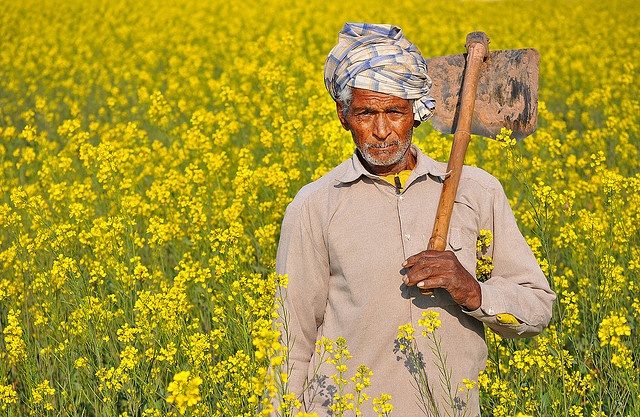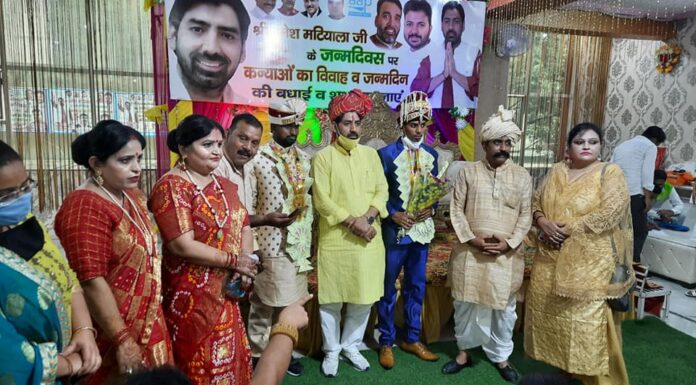Recent developments in our country have brought out in sharp, sometimes tragic relief, the sad plight of the small farmer. Beset by loans, buffeted by the vagaries of weather and sometimes unable to cope of with impact of climate change and inadequate infrastructure, we have seen farmers abandon their land to march on the centres of Government seeking some form of relief.
They may or may not be successful in their endeavour (though Indian Governments generally cave in when riots are threatened), but it is an undeniable fact that Loan waivers and increased Minimum Support Prices can at best be short-term solutions that do not solve the long-term problem of creating a sustainable, long-term financially viable farming business.

Imagesource :Pinterest
Let us look at some of the things that the Indian Government can do in order to support small farmers to grow and prosper.
Bring in systematic training to the farm and farmers
There is a vast amount of knowledge and information about agriculture that remains unutilised by the Indian farming community due to lack of widespread availability of this knowledge in the rural areas. Indeed, access to agriculture-based courses of study needs to be made affordable and widely-available in order to attract the small farmer to study and adopt it. The Governmental infrastructure in rural areas at panchayat level needs to include officers who are graduates of these courses to guide and develop the farming practices in the area they are responsible for.
Upgrade and improve the curriculum of agricultural management courses:
A common finding is that what is taught in universities offering agriculture-based courses focusses too much on chemical-based farming. From fertiliser to pesticide, the emphasis is on the use of synthetic substances, ignoring the merits and advantages of organic options. In both India and abroad there is a growing emphasis on moving away from synthetic fertiliser and pesticide and towards natural farming. In the long run, neither approach may be sustainable on its own and it is incumbent upon research and education institutes to find the optimum balance between the two.
Encourage synergistic land use
Most farmers grow crops based on history rather than on what works best for their land and their condition. Moreover a lot of the farmland in India is being used for crops whose production was imposed by the British to align with their economic requirements. The use of land in water-scarce Maharashtra to grow cotton and sugarcane, for instance, is unlikely to be the best possible use of land that might be far better served growing pulses, maize or onion.
Improve irrigation and transportation infrastructure
The Government has a further responsibility to prioritise investment in projects that allow farmers to reduce their dependency on seasonal rainfall and allow them to move produce to markets in the fastest possible time without excessive cost or damage to the crop.
Avoid interference in the small farmer ecosystem
A look at the state of agriculture in the USA, where traditional, organic farmers are being run out of business by the emergence of food corporations and the concurrent explosion in obesity and health problems should serve as adequate warning to us in India. Excessive regulation and disruption of traditional farming ecosystems, whether it is unreasonable bans on sale of livestock, a breakdown of law-and-order around transportation corridors for cattle or the choking of supplies to the leather and meat industries, is best avoided.
The problems of the agriculture sector in India are vast and complex and no doubt it will take more than a few suggestions to resolve them in a meaningful way. Nonetheless, a start must be made somewhere, if the Government is serious about the long-term benefit of the small farmer.
































To day and now a days the panchayath Development officers, their higher ups like EO of Taluk panchayaths and Zilla panchayaths are hand in glouse in corruption, misappropriation of funds, which were due to farmers.I will give one exmple one panchayath eithout fear ot favour.The kadahalli panchayath PDO Mr Muniraju sathanur hobli,kanakapura Taluk,Ramanagara District, Kanakapura,who has misappropriated amount to the extent of Rs.75 lakhs the amount supposed to have paid to the farmers for animal shulters,toilets construction, digging channel around their lands, civil contracts etc,he has drawn amount from Banks but not paid to many benificiary of village farmers.He is suppose to pay benificiary through Bank transfer, he has no power to withdraw money from Bank more than Rs. 49/- perday, but he has drawn lakhs of rupees from Banks and not paid many benificiary. The complaint on him to emmediat officer The Executive offcer Mrs Lakshmi not yeilded result complaint to CEO Zillapanchayat not at all useful. Further complaint to The Justice Karnataka Lokayuktha and The chief Minister of state and Revenue and Agruculture Minsters was found more useless, Finally what conclusion that I can arrive is that the corruption is hand-in- glouse from top to the bottom agencies which I have named herein Myy letter of complaint on the matter to the The Union Government was also not usefull with the reason that it is the state subject. When such is the case why do you ask for suggestions in the matter from the public .